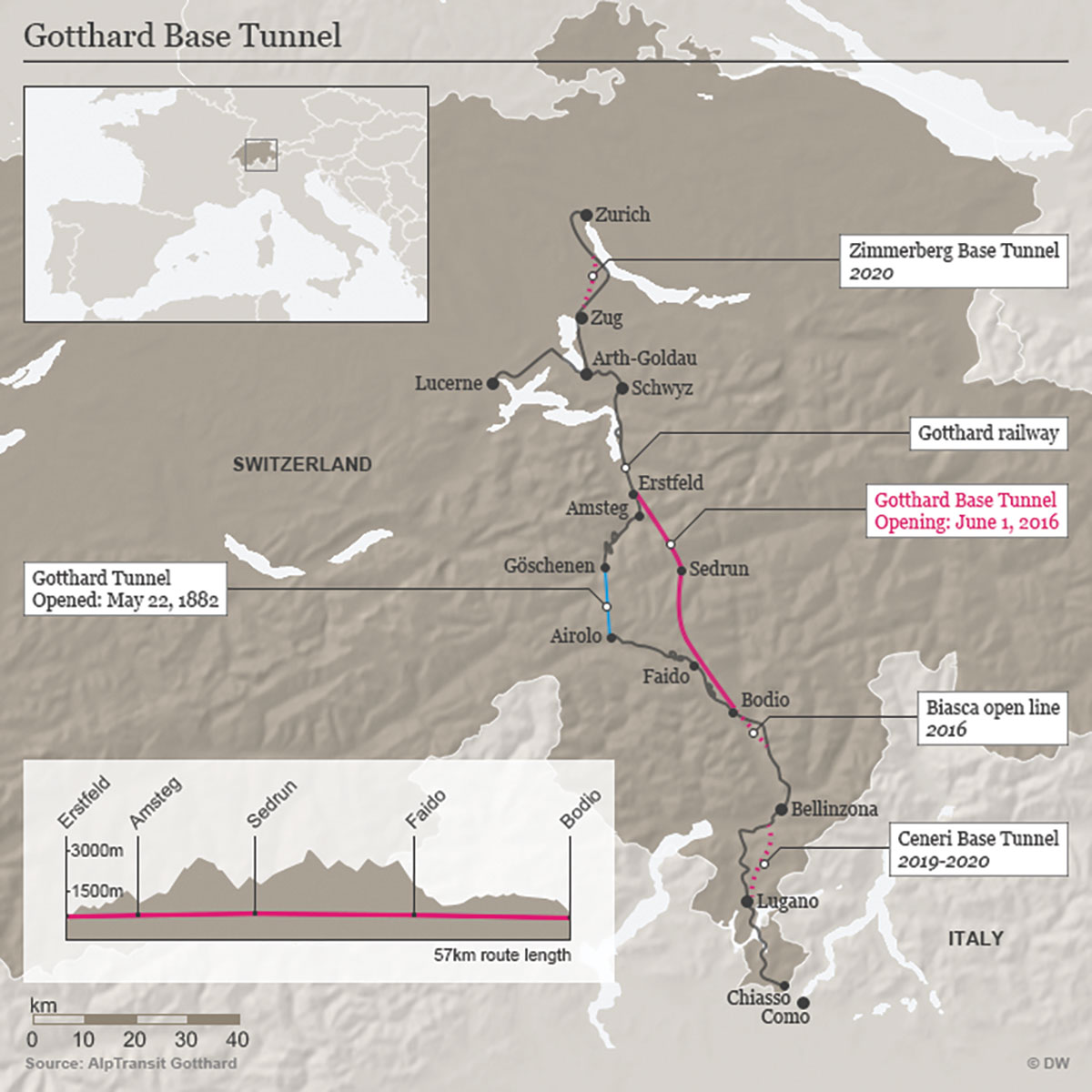Not only will you be connected through an integrated rail network, but trains make communities more walkable and financially stable, with more opportunities.
Trains have crossed the Alps for nearly two centuries. Now they’re going right through them. And there is an important lesson for California in this story. It needs the same bold vision and determination to make its Bay Area to L.A. line a reality.
For centuries, the Alps were a huge barrier to trade and tourism. Europe solved the problem in the 1800s by building railroad routes up and over them. But running tunnels directly through the mountains was always a better solution. Now it’s happening.
A series of tunnels cutting through the base of the mountains is under construction. One of them actually opened in 2016. The Gotthard Base tunnel is 35 miles long and runs 8,000 feet below the mountain peaks at the deepest point. Two more base tunnels, the Ceneri and Lötschberg, are scheduled to open in late 2020.
They’re all part of a project to create a new rail link through the Alps. It’s reshaping and expanding trade and the tourism industry across Central Europe.
The project is especially relevant as California plans an 82-mile segment of high-speed rail running from Bakersfield to Palmdale. Roughly 9 miles of the segment will be a tunnel through the Tehachapi Mountains northeast of Los Angeles. The California High Speed Rail Authority is currently seeking public input on its Draft Environmental Impact Report for the segment.
The estimated cost of the project is $18 billion. It’s a critical element of the high-speed line that will eventually run from the Bay Area to L.A. by way of the Central Valley. Like the base tunnels through the Alps, the line will boost trade and tourism by connecting several regions that are critical to the state and national economy.
So the line will deliver immense benefits on multiple levels—economic, environmental, safety, and more. The main threat now is the fear that it’s an expensive gamble, especially the tunneling part.
A 9-mile tunnel through the Tehachapi Mountains is a daunting project, no doubt. But it’s not a gamble—not when the current transportation paradigm is unsustainable, and not when rail connectivity is certain to pay big dividends.
That’s why countries all over the world are investing heavily in tunnel projects that connect cities and regions. For example, the 17-mile Semmering Base Tunnel will shorten travel times between Vienna and the Adriatic Sea when it opens in 2027. In 2028, the Brenner Base Tunnel (connecting Austria and Italy) will become the longest rail tunnel in the world—roughly 40 miles! In 2013, Turkey opened an 8.5 mile tunnel under the Bosphorus Straits, connecting Europe and Asia. And Turkey is now in the process of building a series of tunnels that shorten and straighten the route between Ankara and Istanbul.
The point is: Many other countries are doing their own versions of this project. We can do it, too. Like the Golden Gate Bridge, the Pacific Coast Highway, and multitudes of other transformative projects, the high-speed line will soon be an indispensable engine of California’s growing green economy.
All that’s needed are the determination to push forward with it—and the vision to stay the course.
Read More:
Huge Tunnel Network Creates New Railway Link Through the Alps
World’s Longest Rail Tunnel to Open in Switzerland Under Alps
The Latest from HSRA
Our Latest Blog Posts
Check out the latest news, updates, and high speed rail insights from our blog!




